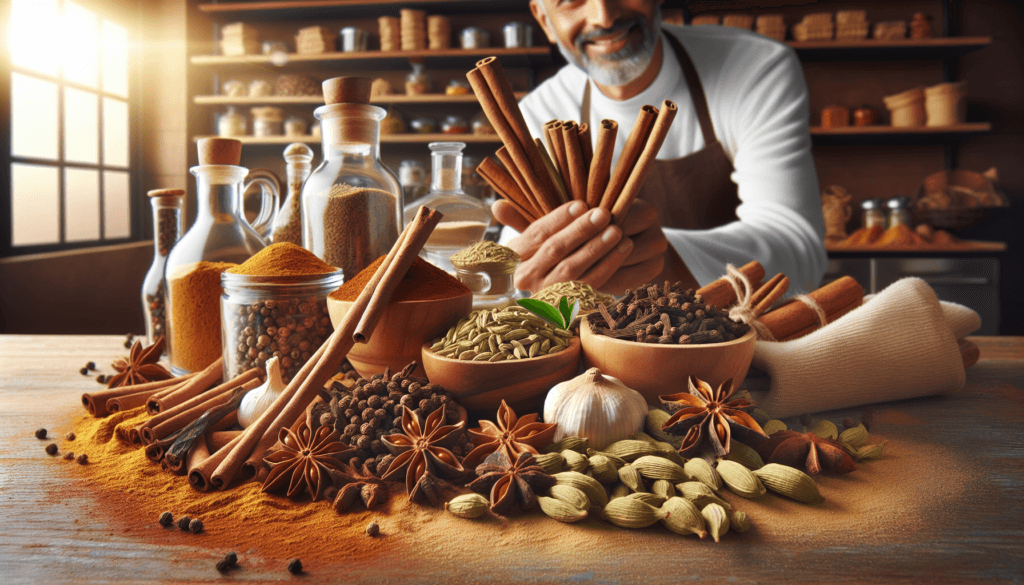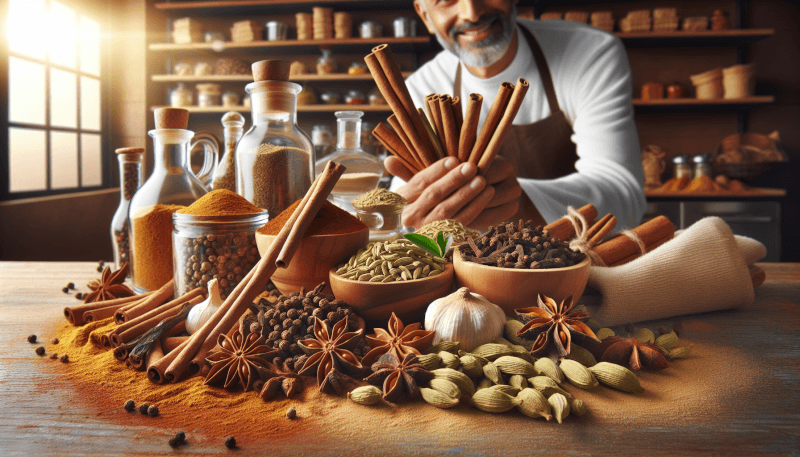Are you a baking enthusiast looking to add some extra flavor to your favorite recipes? Look no further! This comprehensive guide will take you on a journey through the magical world of baking with spices and aromatics. From cinnamon to cardamom, ginger to nutmeg, we’ll explore how these ingredients can elevate your baked goods to new heights. Get ready to tantalize your taste buds and impress your friends and family with a whole range of delicious treats that are bursting with aromatic goodness. Let’s get started!
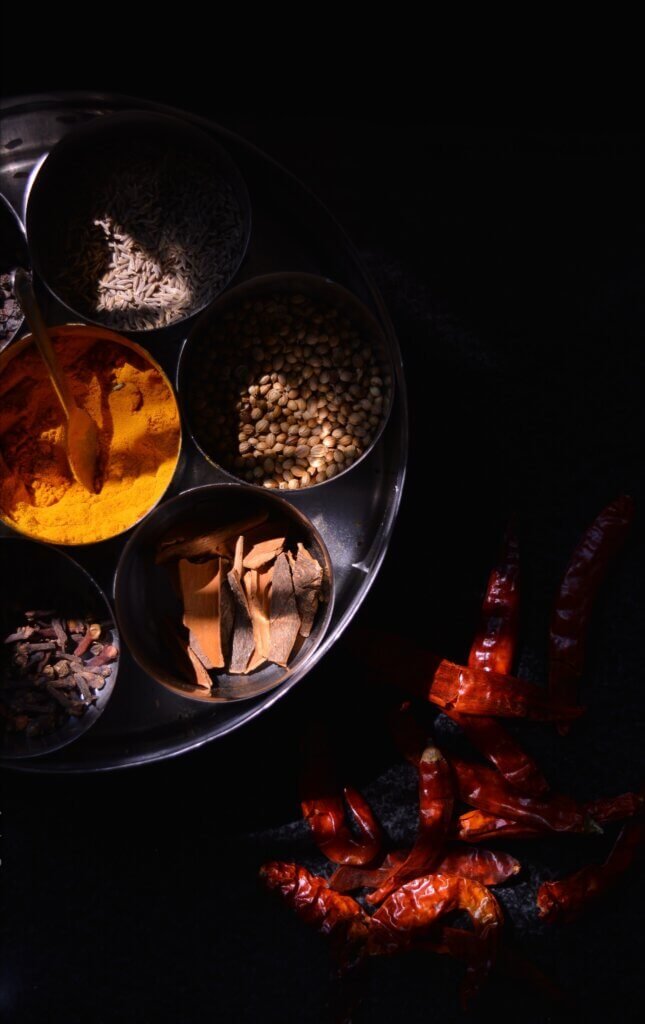
Choosing the Right Spices and Aromatics
Understanding the Flavor Profiles
When it comes to baking with spices and aromatics, understanding the flavor profiles is essential. Each spice and aromatic ingredient has its own unique taste and aroma, and knowing how they work together can greatly enhance your baked goods. For example, cinnamon has a warm and sweet flavor, while ginger adds a spicy and zesty kick. By understanding the characteristics of different spices and aromatics, you can create harmonious flavor combinations in your recipes.
Considering Fresh vs. Dried Spices
When choosing spices for your baking endeavors, you may come across the option of using either fresh or dried varieties. Both have their own advantages and can contribute to the overall taste of your baked goods. Fresh spices, such as freshly grated nutmeg or ginger, can provide a vibrant and intense flavor. On the other hand, dried spices have a concentrated flavor that can withstand high heat during baking. Consider the specific recipe and desired outcome to decide whether to use fresh or dried spices.
Exploring Aromatic Ingredients
Aromatic ingredients play a crucial role in baking. They add depth and complexity to your creations, tantalizing both the taste buds and the olfactory senses. Common aromatic ingredients include vanilla extract, lemon zest, and almond extract. These ingredients can take your baked goods to the next level, creating a delightful sensory experience. Don’t be afraid to experiment with different aromatics to discover new flavor combinations that will elevate your baking.
Storing and Using Spices and Aromatics
Proper Storage Techniques
To ensure the longevity and quality of your spices and aromatics, it is important to store them properly. Spices should be kept in airtight containers, away from heat, light, and moisture. This helps to preserve their flavor and prevent them from losing their potency. A cool, dark cabinet or drawer is an ideal storage spot. Aromatics, such as vanilla extract, should also be stored in a cool and dark place. Make sure to label your spices and aromatics with the purchase date to keep track of their freshness.
Grinding and Crushing Spices
Sometimes, a recipe may call for ground spices. Instead of buying pre-ground spices, consider grinding them yourself for maximum flavor. Invest in a quality spice grinder or mortar and pestle to achieve the desired consistency. By grinding your own spices, you release their essential oils, resulting in a more robust and intense flavor. Just be sure to grind the spices right before using them to maintain their freshness and potency.
Infusing Aromatics
Infusing aromatics into your baked goods can take their flavors to new heights. One popular method is infusing flavors into liquids, such as milk or cream, that are used in recipes. For example, heating milk with vanilla pods before adding it to a cake batter can infuse the entire dessert with a rich and fragrant vanilla aroma. Another technique is steeping aromatics in liquids, such as tea or syrups, before incorporating them into your baking. This allows the flavors to meld together, creating a more pronounced and harmonious taste.
Adding Spices and Aromatics to Baking Recipes
Balancing Flavors in Sweet and Savory Recipes
When adding spices and aromatics to your baking recipes, it is crucial to achieve a balance of flavors. This is especially important when working with sweet and savory recipes. Too much spice can overpower the sweetness of a dessert, while too little can leave a savory dish lacking in flavor. Experiment with different amounts of spices and aromatics, and taste as you go. Adjust the quantities until you achieve the perfect balance that complements the overall taste of your baked goods.
Enhancing Aromas in Desserts
Aromas play a significant role in our perception of taste. Enhancing the aromas in your desserts can make them even more enticing and mouthwatering. Consider using aromatic ingredients such as citrus zest, extracts, or spices like cardamom or nutmeg. These additives can elevate the sensory experience by creating enticing scents that make your baked goods irresistible. Paying attention to the aromatic aspect of your baking will not only delight your taste buds but also captivate your guests.
Pairing Spices with Different Baked Goods
Different baked goods can benefit from specific spice pairings. For example, cinnamon is a classic choice for spicing up apple pies or cinnamon rolls. Nutmeg pairs well with creamy desserts like custards or eggnog. Conversely, savory spices like cumin and paprika work wonderfully in bread recipes or spice cakes. Experimenting with different spice combinations for various baked goods can unlock new flavors and create memorable taste experiences.
Using Spices and Aromatics in Specific Baking Techniques
Spices and Aromatics in Yeast Doughs
Yeast doughs provide a perfect canvas for incorporating spices and aromatics. Adding spices like cinnamon or cardamom to bread dough creates warm and comforting flavors that permeate the entire loaf. You can also experiment with incorporating aromatic ingredients like lemon zest or rosemary into savory yeast doughs. The long rising time of yeast doughs allows the flavors to deepen and develop, resulting in a truly flavorful and fragrant final product.
Flavoring Batters and Doughs with Aromatics
When making batters or doughs, adding aromatics can take your baked goods to the next level. For example, infusing lemon zest into a pound cake batter imparts a bright and refreshing flavor, creating a delightful contrast to the richness of the cake. Consider experimenting with different aromatics, such as almond extract, orange blossom water, or even lavender, to add a touch of complexity and intrigue to your batters and doughs.
Sprinkling Spices as Toppings
Spices can be used not only as ingredients but also as toppings to add an extra layer of flavor and visual appeal to your baked goods. Sprinkling cinnamon sugar over muffins or dusting powdered ginger on top of cookies not only enhances the taste but also adds a beautiful finishing touch. Spices used as toppings can provide a burst of flavor with each bite and create a tantalizing presentation that will impress your guests.
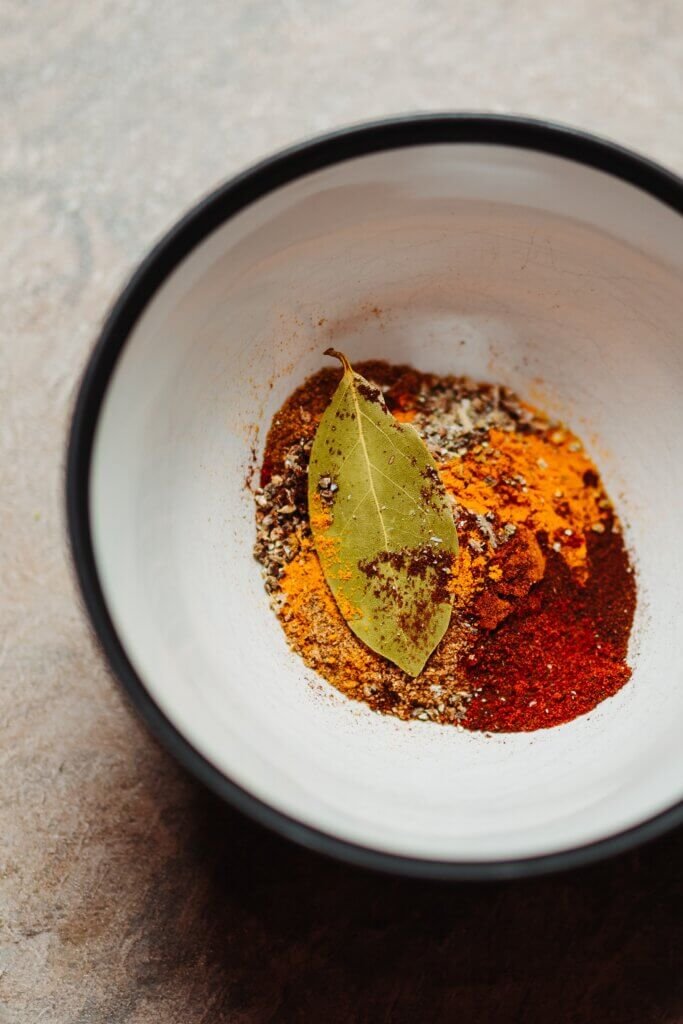
Spice and Aromatic Combinations for Popular Baked Goods
Classic Cinnamon-Spiced Treats
Cinnamon is a popular spice that adds warmth and sweetness to many baked goods. It pairs perfectly with treats like apple pie, snickerdoodle cookies, and cinnamon rolls. The combination of cinnamon and sugar creates a comforting and nostalgic flavor that is hard to resist. Experiment with different variations of cinnamon-spiced treats to discover your favorite combination.
Warm and Spicy Ginger-Based Recipes
Ginger adds a delightful zing and heat to baked goods, making it a favorite spice for those who enjoy a bit of warmth in their desserts. It pairs well with flavors like orange, pear, and molasses. Gingerbread cookies, ginger cake, and ginger scones are just a few examples of the delightful treats that can be created with this versatile spice. Embrace the spiciness and explore the many possibilities of ginger-based recipes.
Fragrant Vanilla and Cardamom Infusions
Vanilla and cardamom are two aromatic ingredients that are widely used in baking. The warm and floral notes of vanilla can enhance the flavor of almost any dessert, from cakes and cookies to puddings and ice creams. Cardamom, with its unique aromatic profile, adds a hint of citrus and minty freshness to baked goods. Combining vanilla and cardamom can result in a fragrant infusion that elevates your baked goods to new heights of deliciousness.
Creating Custom Spice Blends
Understanding Spice Combinations
Creating custom spice blends allows you to tailor the flavors of your baked goods to your personal preference. Understanding how different spices work together is the key to crafting unique and delicious blends. Experiment with combining spices that have complementary or contrasting flavors to create a harmonious balance. For example, a blend of cinnamon, nutmeg, and allspice can create a warm and comforting flavor for fall-inspired baked goods.
Experimenting with Unique Blends
Don’t be afraid to step outside the box and experiment with unique spice blends. Combining unexpected flavors can result in exciting and innovative baked goods. For example, a blend of chili powder and cocoa powder can create a bold and spicy twist on chocolate desserts. Let your creativity guide you as you explore different combinations and create your own signature spice blends.
Customizing Blends for Different Baked Goods
Different baked goods may call for specific flavor profiles. Customizing your spice blends to suit the specific recipe can take your baking to the next level. For example, a blend of ground cloves, ginger, and cinnamon is perfect for pumpkin pie, while a combination of cardamom, cinnamon, and nutmeg complements a carrot cake beautifully. Adjusting your spice blends based on the desired outcome of each recipe allows you to create truly exceptional baked goods.
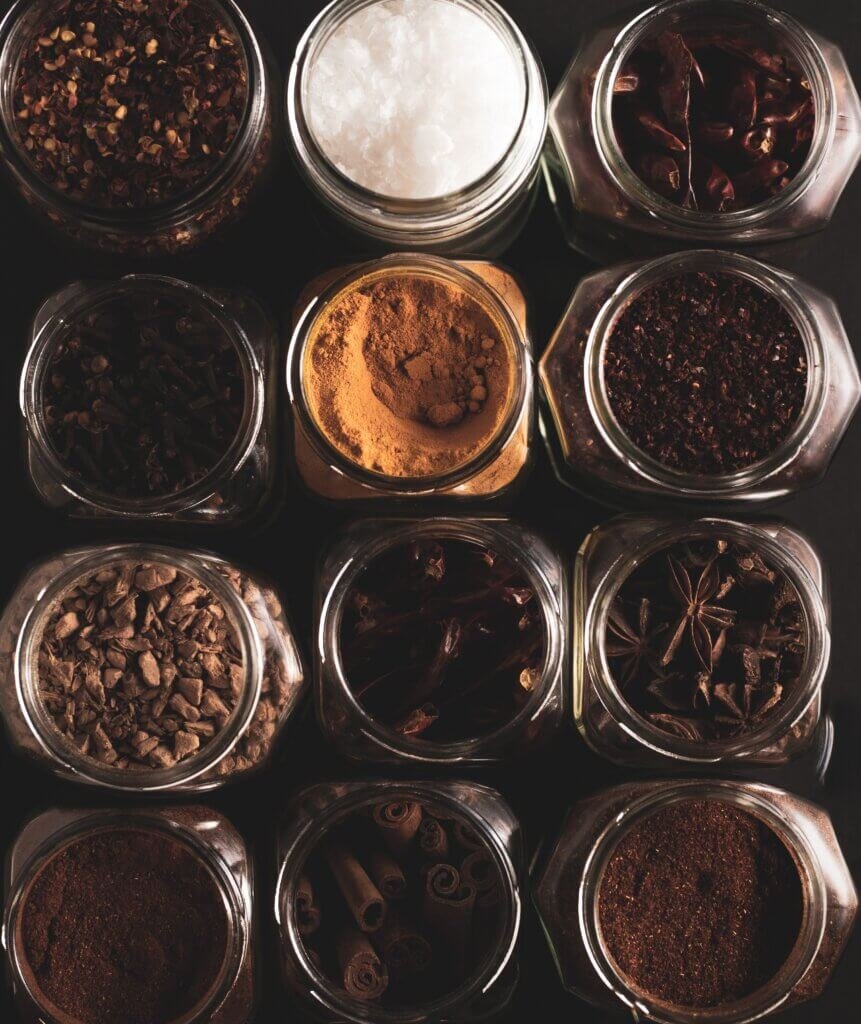
The Art of Garnishing with Spices and Aromatics
Decorating with Edible Flowers and Spices
Garnishing your baked goods with edible flowers and spices adds a touch of elegance and visual appeal. Delicate flowers like violets, pansies, or rose petals can be used to decorate cakes, tarts, or even cupcakes, adding a pop of color and a subtle floral flavor. Sprinkling ground spices, such as cocoa powder or ground cinnamon, over frosted desserts can create intricate patterns or provide a lovely contrast of flavors. Let your creativity run wild as you transform your baked goods into edible works of art.
Infusing Spice Aromas into Glazes
Glazes are a fantastic way to add a glossy finish and a burst of flavor to your baked goods. Infusing spice aromas into glazes can take them to the next level. For example, a simple vanilla glaze can be enhanced with a touch of nutmeg or cardamom, adding warmth and complexity to the final product. Experiment with different spice infusions to create glazes that perfectly complement your baked goods and leave a lasting impression.
Using Aromatics to Enhance Presentation
Presentation is an important aspect of baking, and aromatics can play a role in elevating the visual appeal of your creations. Placing a sprig of fresh mint or a slice of citrus on top of a cake or tart can add a vibrant and refreshing touch. The aroma of these fresh ingredients can entice your senses even before taking the first bite. Play around with different aromatic garnishes to create visually stunning desserts that make a lasting impression.
Common Mistakes to Avoid When Baking with Spices and Aromatics
Overpowering Flavors with Spices
One common mistake when baking with spices is overpowering the flavors of your baked goods. While spices can add depth and complexity, using too much can overwhelm the other ingredients and result in an unbalanced flavor. Start with small amounts of spices and gradually increase the quantity as needed, tasting along the way. This will help you achieve a harmonious blend of flavors and prevent your spices from overpowering the overall taste of your baked goods.
Not Adjusting for Freshness and Potency
Spices and aromatics can vary in freshness and potency depending on their age and quality. Failing to adjust the quantities or flavors accordingly can impact the final outcome of your baked goods. Pay attention to the recommended freshness indicators and adjust your recipes accordingly. For example, if your ground cinnamon is older, you may need to increase the amount to achieve the desired level of flavor. Adjusting for freshness and potency ensures consistent and delicious results.
Failing to Balance Sweet and Savory Profiles
When working with spices and aromatics, it is important to find a balance between sweet and savory profiles in your baked goods. The spices and aromatics should complement the overall taste of the dish, whether it leans towards the sweet or savory side. Failing to achieve this balance can result in a confusing flavor profile or a dish that tastes off. Taste as you go and make adjustments accordingly to strike the perfect balance of flavors.
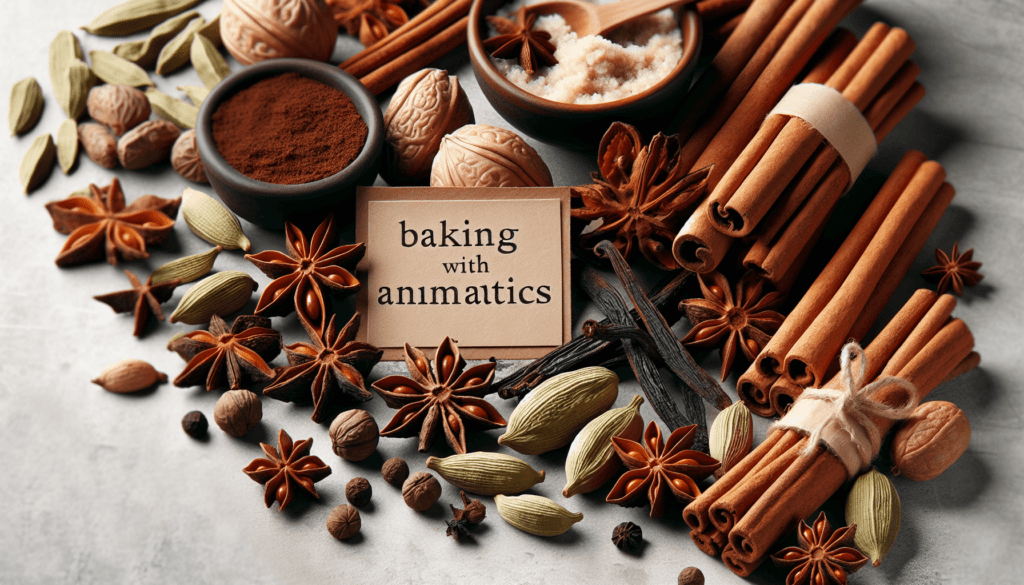
Tips and Tricks for Perfectly Spiced Baked Goods
Start with Small Amounts and Adjust Gradually
When adding spices to your baking, it’s best to start with small amounts and adjust gradually. This allows you to build up the flavors as needed and prevents the risk of overpowering your baked goods. Taste the batter or dough after adding a small amount of spices, and then adjust based on your personal preference. Remember, it’s easier to add more spices than to remove them, so take it slow and enjoy the journey of finding your perfect spice balance.
Experiment with Unconventional Spice Pairings
While traditional spice blends are a staple in baking, don’t be afraid to experiment with unconventional pairings. Mixing unexpected spices can lead to exciting flavor combinations that will surprise and delight your taste buds. For example, try combining a pinch of cayenne pepper with cocoa powder for a unique and spicy twist on brownies. Embrace your creativity and explore the possibilities of unconventional spice pairings in your baking.
Using Freshly Ground Spices for Intensity
To achieve maximum flavor intensity, consider grinding your spices fresh before using them in your baking recipes. Freshly ground spices have a more potent flavor profile compared to pre-ground options, which can lose their potency over time. Invest in a quality spice grinder or mortar and pestle to grind your spices just before using them. The extra effort will result in a bolder and more vibrant taste experience.
Exploring Regional Spice and Aromatic Traditions in Baking
Spices and Aromatics in European Baking
European baking traditions are rich in the use of spices and aromatics. For example, Scandinavian baking often incorporates warming flavors like cardamom and cinnamon, resulting in treats like Swedish cinnamon buns or Finnish pulla bread. Italian baking embraces flavors like citrus zest, vanilla, and almond extract, producing delicate and fragrant desserts like panettone and cannoli. Exploring different European baking traditions allows you to dive into a world of diverse spice and aromatic combinations.
Asian Baking Traditions and Flavors
Asian baking traditions are known for their unique spice and aromatic combinations. Chinese cuisine often includes spices like star anise, ginger, and Sichuan peppercorns, which infuse their pastries and steamed buns with bold and distinctive flavors. In Indian baking, spices like cardamom, saffron, and cinnamon are commonly used in treats like gulab jamun and chai-spiced cookies. Exploring Asian baking traditions provides an opportunity to discover a whole new world of exotic spices and aromatics.
Middle Eastern and African Influences
Middle Eastern and African baking traditions showcase a wide array of spice and aromatic combinations that are both vibrant and aromatic. Ingredients like rosewater, orange blossom water, cinnamon, and nutmeg are prevalent in Middle Eastern pastries such as baklava and maamoul. African baking traditions feature spices like cloves, ginger, and vanilla in their sweet treats, creating a unique flavor profile. Exploring the spice and aromatic influences of Middle Eastern and African baking traditions brings a touch of exoticism to your baking repertoire.
In conclusion, baking with spices and aromatics opens up a world of flavors and possibilities. Understanding the flavor profiles, proper storage techniques, and spice pairings can elevate your baked goods to new heights. Whether you’re decorating with edible flowers, experimenting with unique blends, or exploring regional spice traditions, the art of baking with spices and aromatics allows you to create truly exceptional and unforgettable treats. So go ahead, dust off your spice rack, and embark on a delicious journey filled with tantalizing scents and delectable flavors.
